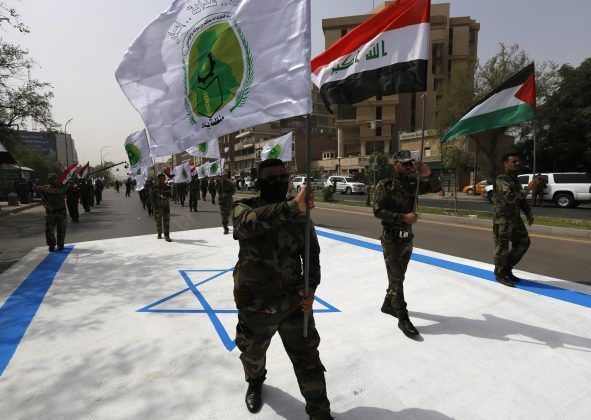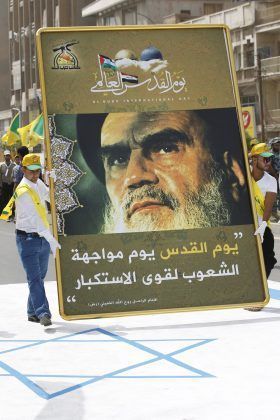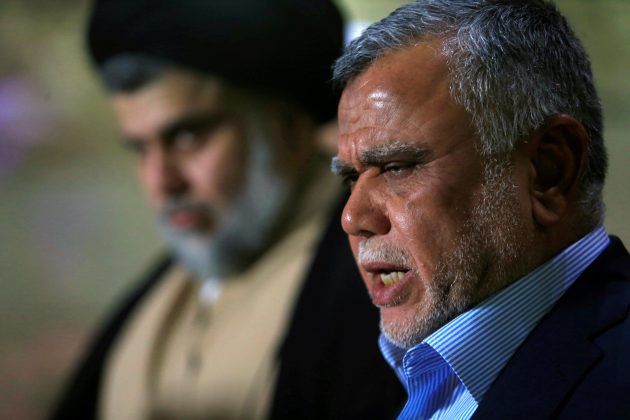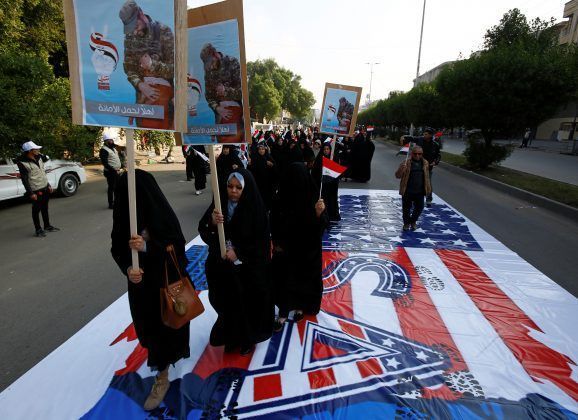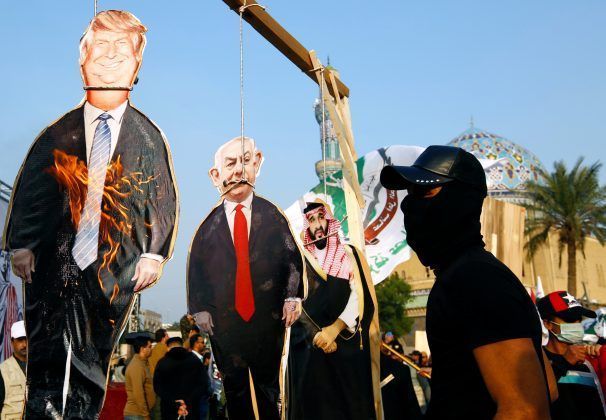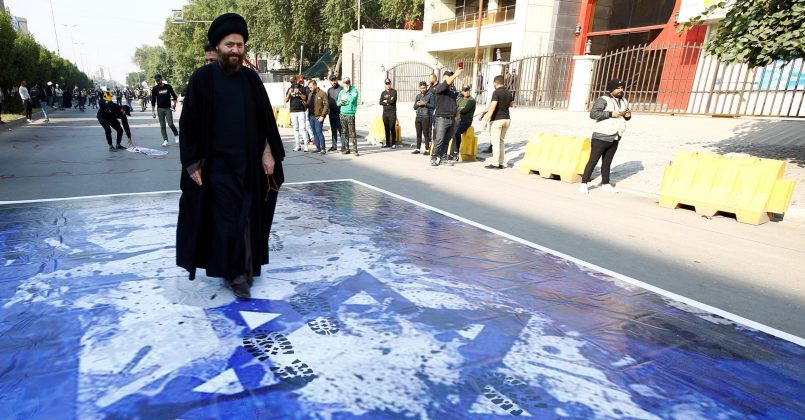BAGHDAD, Dec 30 (Reuters) – U.S. air strikes in Iraq and Syria against the Iran-backed Kataib Hezbollah militia group have brought a threat of reprisal.
These are the most powerful such paramilitary groups in Iraq.
KATAIB HEZBOLLAH
Formed in 2003 after the U.S.-led invasion, the secretive Kataib Hezbollah (Battalions of the Party Of God) is one of the smallest Iranian-backed militias in Iraq, with an estimated 5,000 members. But it is considered one of the most dangerous.
During the recent war against Islamic State, Kataib received battlefield training from Lebanon’s Hezbollah.
Kataib has long targeted U.S. forces and was one of the earliest groups to dispatch fighters to Syria to support President Bashar al-Assad in the civil war.
In 2009, Washington declared Kataib Hezbollah a foreign terrorist organization, saying it threatened stability in Iraq, one of the most important U.S. allies in the Arab world.
The group’s founder Jamal Jaafar Ibrahimi, known by his nom de guerre Abu Mahdi al-Mohandes, has warned of a strong response against U.S. forces following Sunday’s attacks on several bases that killed at least 25 people.
Muhandes is an adviser to Qassem Soleimani, commander of Iran’s Qods Force — an arm of the Islamic Revolutionary Guard Corps that gives material support to groups like Hezbollah, Hamas and Palestinian Islamic Jihad.
The United States has declared the former lawmaker a terrorist. In 2007, a Kuwaiti court sentenced him to death in absentia for his involvement in the 1983 U.S. and French embassy bombings in Kuwait.
Mohandes also oversees Iraq’s Popular Mobilisation Forces (PMF), an umbrella grouping of paramilitary groups mostly consisting of Iran-backed Shi’ite militias that was formally integrated into Iraq’s armed forces.
[aesop_image img=”https://kayhanlife.com/wp-content/uploads/2019/12/2019-12-30T143631Z_1567966489_RC2Q5E9X7DV4_RTRMADP_3_IRAQ-SECURITY-USA.jpg” panorama=”off” credit=”Iraqi people walk on a U.S. flag in a protest after an airstrike at the headquarters of Kataib Hezbollah militia group in Qaim, in the holy city of Najaf, Iraq December 30, 2019. REUTERS/Alaa al-Marjani” align=”center” lightbox=”off” captionsrc=”custom” captionposition=”left” revealfx=”off” overlay_revealfx=”off”]
BADR ORGANISATION
Badr leader Hadi al-Amiri is widely seen as Tehran’s man in Iraq. He fought on Iran‘s side in its 1980-1988 war with Iraq. Amiri, a Farsi speaker, spent more than two decades fighting Saddam Hussein from exile in Iran.
Badr, established in 1982, was named after a key seventh century battle during the time of the Prophet Mohammed. It was the backbone of the volunteer forces fighting Islamic State.
Badr was known for brutal tactics during Iraq’s civil war but has tried to soften its image.
Since 2014, Badr has transformed itself into a leading force in Iraqi politics, an important ally for Iran which has extended its reach to parliament.
Like some other groups, Badr gets its inspiration from Iran‘s Supreme Leader Ayatollah Ali Khamenei. Badr has also sent thousands of fighters to Syria.
ASAIB AHL AL-HAQ
“League of the Righteous” is one of Iraq’s most notorious militia groups. Formed in 2006 by its leader Qais al-Khazali, the sectarian force has launched numerous operations against American and Iraqi forces.
Critics say Asaib is still violent despite announcing it was ready to lay down arms in 2012 and join the political process.
In 2007, Khazali was arrested by American forces for his alleged role in an attack on a government compound in Karbala in the Shi’ite heartland of southern Iraq, which left five American soldiers dead.
He is now one of the most feared and respected Shi’ite militia leaders in Iraq, and one of Iran’s most important allies in the country.
He was among the thousands of militia fighters, armed and wearing green camouflage military fatigues, who flocked to northern Iraq to battle Islamic State.
[aesop_image img=”https://kayhanlife.com/wp-content/uploads/2019/12/2019-10-26T141652Z_1236979196_RC1EC2D385A0_RTRMADP_3_IRAQ-PROTESTS-scaled.jpg” panorama=”off” credit=”Qais al-Khazali, leader of the militant group Asaib Ahl al-Haq, and Hadi al-Amiri Leader of Badr Organisation, attend a march during the funeral of members of Shi’ite group Asaib Ahl al-Haq, who were killed when protesters attacked the group’s office during anti-government protests, in Baghdad, Iraq October 26, 2019. REUTERS/Thaier Al-Sudani” align=”center” lightbox=”off” captionsrc=”custom” captionposition=”left” revealfx=”off” overlay_revealfx=”off”]
(Writing by Michael Georgy; Editing by Andrew Cawthorne)


